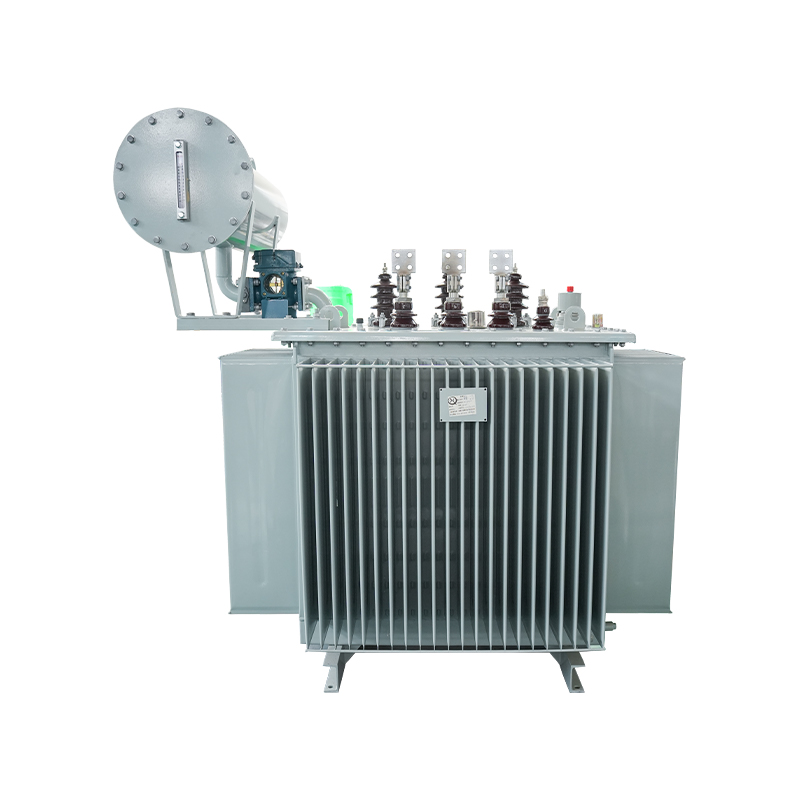50KVA Single-Phase Pole-Mounted Oil-Immersed Transformer
50KVA 34.5KV/0.48KV
See Details
Transformers are essential components in the electrical power system, serving to step up or step down voltages as needed. While both Distribution Transformers and Power Transformers share the same fundamental principle of operation — using electromagnetic induction to transfer energy — they are designed for different purposes and applications. Understanding the distinctions between these two types of transformers is key for engineers, electrical professionals, and anyone working in the energy sector.
1. Purpose and Function
Distribution Transformers:
Distribution transformers are designed to step down the high voltage from the transmission lines to the lower voltage levels used in homes, businesses, and industries.
Their main role is to provide the final voltage transformation in the power distribution network. They typically operate at lower voltage levels and are located close to the point of use (such as residential areas or commercial buildings).
Power Transformers:
Power transformers, on the other hand, are used to step up or step down voltages at the transmission level. These transformers are typically used in substations where electricity is transmitted over long distances.
They handle much larger loads and higher voltages than distribution transformers, ensuring that power can be transmitted efficiently over vast distances with minimal loss.
2. Voltage Range
Distribution Transformers: Typically operate at voltages up to 33 kV. These are the transformers used to reduce voltage to a level suitable for end-user consumption (e.g., 11 kV to 415 V or 230 V).
Power Transformers: Operate at much higher voltages, usually from 33 kV to 765 kV and beyond, to step up or step down voltage for long-distance transmission.
3. Size and Capacity
Distribution Transformers: These transformers are generally smaller and lighter in size. Their capacities are usually lower, ranging from 10 kVA to 5000 kVA, depending on the size of the area they are serving.
Power Transformers: Power transformers are large and bulky, with much higher capacities, ranging from 5 MVA to several hundred MVA (Mega Volt Amps), designed to handle the massive power loads in transmission systems.
4. Load Handling
Distribution Transformers: Designed to handle fluctuating and lower loads. They are typically subjected to a constant or relatively smaller load variation compared to power transformers.
Power Transformers: Designed for more consistent, higher load conditions, where the load demand remains relatively stable or undergoes gradual fluctuations.
5. Efficiency and Cooling
Distribution Transformers: Since distribution transformers are usually located close to the end user, they are required to operate efficiently under varying loads. These transformers often use natural air cooling (self-cooled or oil-cooled) and are designed to handle relatively small variations in temperature.
Power Transformers: Due to their larger size and higher load, power transformers require more sophisticated cooling systems. They commonly use forced oil cooling or a combination of oil and air cooling systems to prevent overheating.
6. Location and Maintenance
Distribution Transformers: Typically found in residential or commercial areas, distribution transformers are often pole-mounted or installed in underground vaults. These transformers are subjected to outdoor environmental factors like rain, humidity, and temperature changes, making maintenance more critical but less frequent. They are relatively easier to access for routine inspections and servicing.
Power Transformers: Power transformers are usually found in substations and are installed in more controlled environments. These units require more frequent monitoring and maintenance due to their size, complexity, and the critical role they play in power transmission.
7. Cost
Distribution Transformers: Generally, distribution transformers are less expensive compared to power transformers due to their smaller size, lower capacity, and simpler design.
Power Transformers: Power transformers are more expensive due to their high voltage capacity, larger size, and complex cooling and maintenance needs.
8. Use Cases and Applications
Distribution Transformers:
Residential Areas: These transformers step down the voltage to levels that are safe and usable for household appliances.
Commercial Buildings: Providing the necessary voltage for lighting, HVAC systems, and other electrical systems.
Small to Medium Industries: Industries with localized energy needs often use distribution transformers to manage their power requirements efficiently.
Power Transformers:
High Voltage Transmission: Power transformers play a vital role in stepping up voltage at the generation point and stepping down voltage at the receiving substations to maintain efficient power transmission over long distances.
Substations: Power transformers are a key element in substations, helping to regulate voltage levels for safe and reliable power distribution.
Grid Integration: These transformers connect different parts of the grid, managing voltage levels across regions and ensuring that energy is distributed efficiently.
9. Longevity and Reliability
Distribution Transformers: Distribution transformers are designed to last for several decades (typically 20-30 years) with proper maintenance. However, they are more likely to experience wear and tear due to their frequent exposure to environmental conditions and load fluctuations.
Power Transformers: Power transformers also have long lifespans, often exceeding 30-40 years, but their failure can have a much larger impact on the overall grid and transmission infrastructure.
Conclusion:
While both distribution and power transformers are essential to the functioning of the electrical grid, they serve different purposes and are designed to handle varying loads, sizes, and voltage levels. Distribution transformers are more common in everyday power delivery to consumers, while power transformers are integral to the backbone of electricity transmission, ensuring that electricity is moved across vast distances efficiently and safely. Understanding the differences between the two types of transformers helps in selecting the right technology for specific applications and ensures optimal performance of electrical systems.
Contact Us